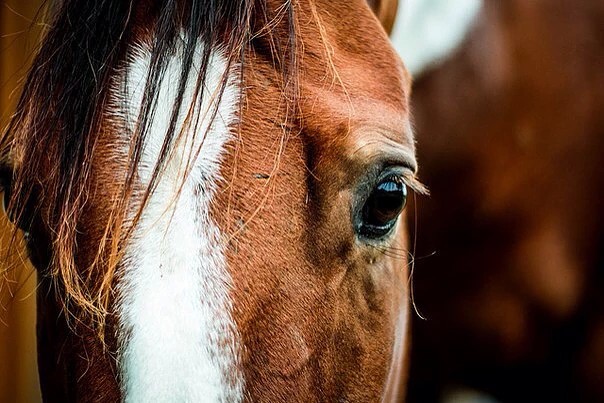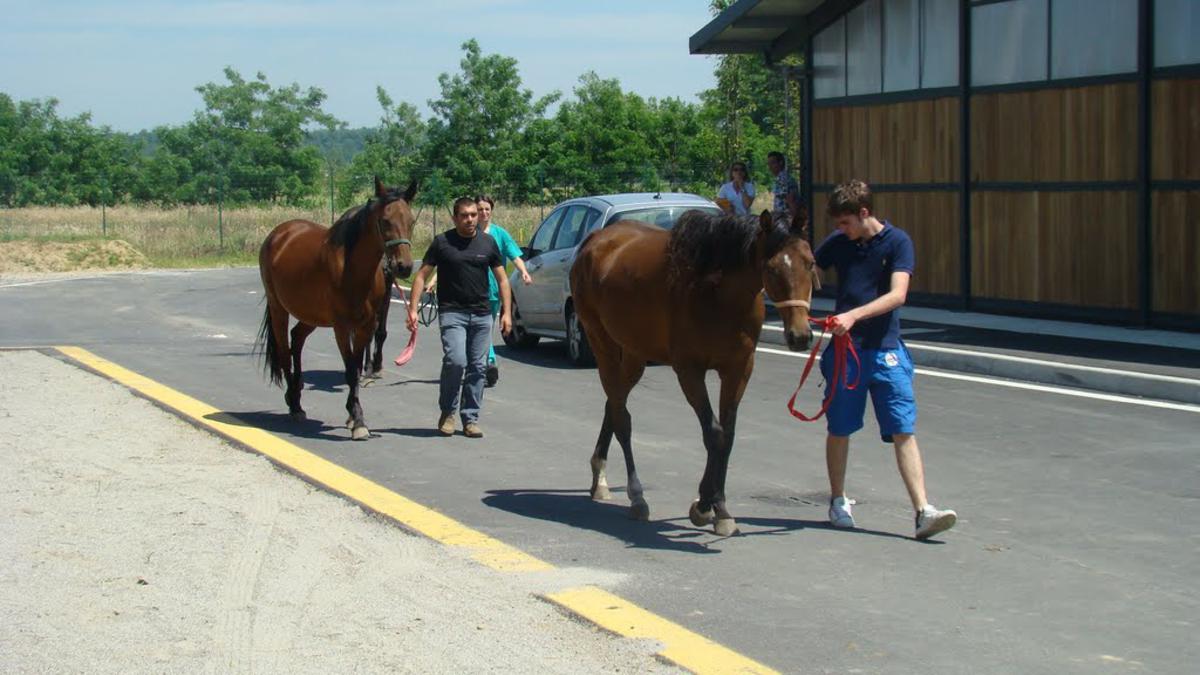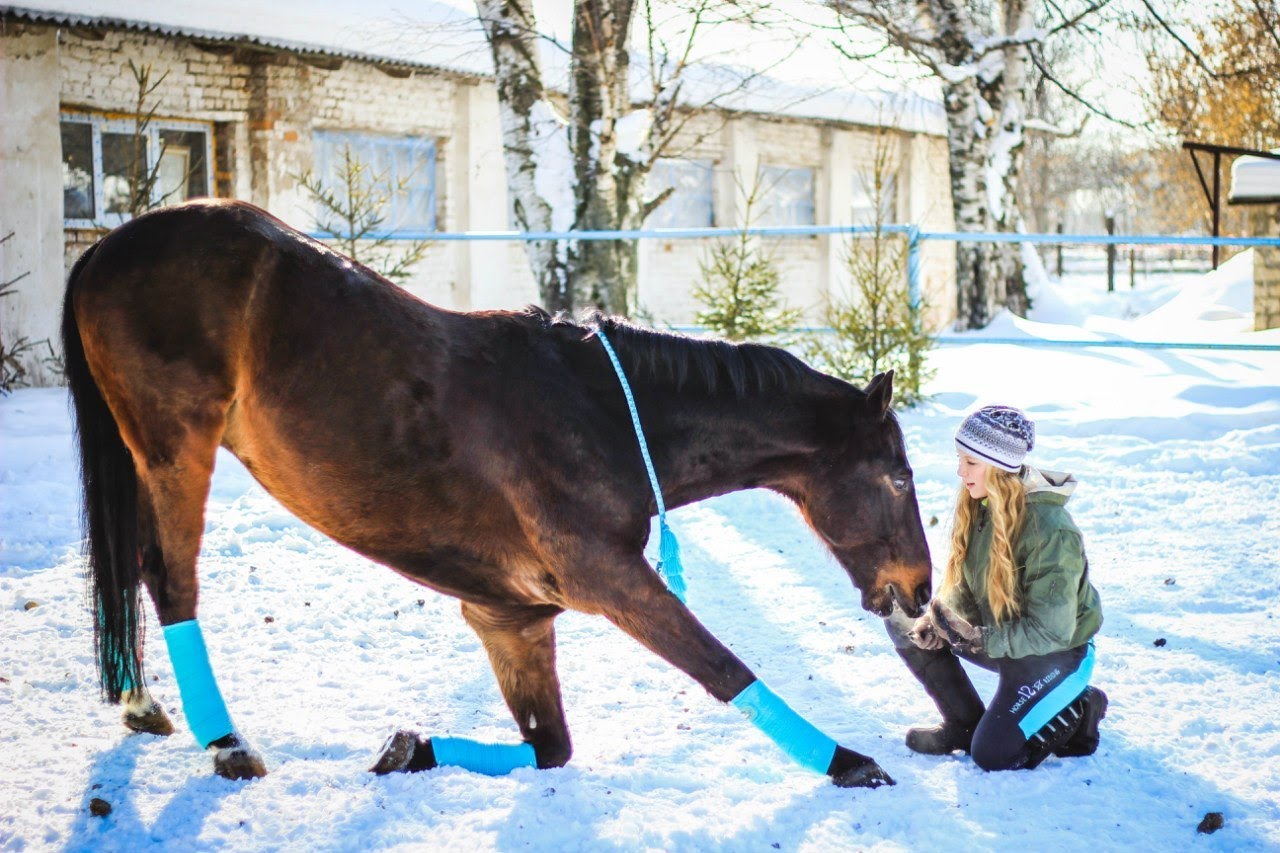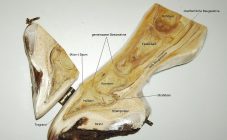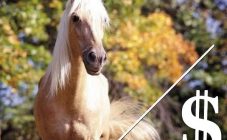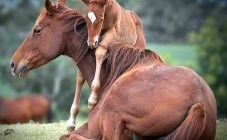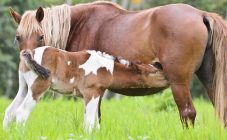Content:
The horse is a great friend, understanding and affectionate. But gaining his trust is not easy. It is not enough just to feed and water the animal, you need to be imbued with it, correctly understand the psychology and physiology of the horse, how it perceives the world, and which senses are more receptive to it. The psychology of a horse is designed in such a way that it does not understand punishment; when interacting with an animal, one should not fight, but direct. Horses are smart, kind and sociable, the main thing is not to spoil the relationship with them.
How the horse perceives the world
Through the eyes
A domestic horse sees much worse than a wild one, is distinguished by myopia, which makes it more fearful. The eyes set apart make it possible to observe the surroundings almost 360 degrees, distinguish shapes, colors.
With ears
Hearing is much better than sight, thin, acute, perceives the smallest rustles, extremely quiet sounds. By hearing, she recognizes approaching steps, a voice.
Through smells
Very strong sense of smell, the horse constantly sniffs everything and remembers smells well enough. Snorting is one of the ways to capture aromas.
Through taste
The main organ of taste is the tongue. Horses are very picky in food, do not eat many feed, herbs, bypass inedible pastures, moldy oats.
Through tactile sensations
The touch is developed strongly, the horse very sensitively perceives sensations with the entire surface of his body, especially with his lips, hooves. The upper lip is distinguished by multiple nerve endings. There are special hairs near the eyes that connect to nerve endings, they help to touch objects that cannot be seen in the dark.
Through emotion and flair
How to build trust
The horse is an unusual creature, with its power, endurance and strength, it inspires us with respect, but at the same time it is an ordinary animal victim, striking with cowardice and timidity. Without trust, relationships are almost impossible, if a horse appears at home, it is imperative to make friends with him. It is impossible to say unequivocally how to make friends with a horse, there are many nuances in this matter: age, gender, existing experience of communication between an animal and a person.
How to gain the trust of a horse, general guidelines for "friendliness":
- There should be no aggression, pressure, voice raising;
- Caution, attentiveness, gradualism, one should not immediately try to "hug" the stallion - closer contact can cause different reactions in the animal: panic, aggression.
Steps to Trust:
- the individual should be allowed to be in her personal space;
- the animal allows you to touch any part of its body;
- then we teach our pet to treat various objects in our hands with calmness;
- complete trust and friendship.
How to train a horse
Moral preparation is a significant element of training. Before starting the training, the horse trainer pays attention to the following points:
- a trusting relationship with an animal: it is completely useless to ask a horse for anything, if a close emotional contact is not established, the horse must make sure that it is safe next to the owner;
- domination: tactful leadership, intelligibly explaining the requirements and intentions to the animal, the main thing is not to overdo it, otherwise the horse will simply start to be afraid;
- attention: nothing will work without the attention of the animal, you need to achieve it before starting work.
The easiest trick is the "trapezoid". The exercise engages all the muscles in the back, helping to improve coordination between the hind and front legs. The main task is to teach you to put your front legs as far in front of you as possible, you can use any method at your discretion.
Before teaching a horse to bow on the wrist, it is important to make sure that the animal is mentally and physically fit (strong and healthy legs, good stretching, ability to keep balance on 3 legs).
Step-by-step steps in horse training:
- we teach to keep balance on 3 legs, keeping the front, bent at the wrist in our hands;
- hold the leg, slightly swaying (slightly back, forward, down), the horse should relax the muscles, distributing balance to the rest of the legs;
- holding the leg, we show the movement down and back, releasing it in time, it is important that the animal understands the principle;
- balancing act.
You can teach a horse to bow in one day, or you can teach it for years, it all depends on the training methods and the age of the animal.
Today, horse hunting is quite relevant, ordinary domestic horses are not suitable for it. A real hunting horse must undergo specific training and have certain physical characteristics.
The most important aspect in this matter is the pet's ability not to be afraid of loud shots. So how do you train your horse to shoot? It is not difficult to train this, the main thing is not to rush. It is important to understand that horses have a fear of everything unknown, while a natural instinct makes the animal run without looking back.
The formation of the habits of horses takes place gradually, the horse gets used to the shot for a long time. A bridle is put on the horse, stroked, treated with a delicacy, at the same time a gun is fired in the distance. The horse, accordingly, is frightened, strives to run away, it is necessary to hold it, each time bringing the place of the shot closer. Before firing, it is necessary to draw the animal's attention to the shooter, so that she understands where the noise is coming from and that it is not dangerous for her.
How to deal with a fearful horse
A horse is itself a fearful animal, they, like people, have a different disposition, there are more and less fearful individuals. Why do horses snort when they first meet a person or object? This is because the horse does not yet understand how to react to the thing (person) in front of it.Any unknown arouses suspicion, apprehension, and, snorting, the horse decides: either the object is not scary to her, and she stops paying attention to it, or she strains and runs away from him.
What horses are often afraid of:
- sharp, unpleasant odors (alcohol, smoke);
- sounds (sharp, loud, shots, rustling, mobile melody);
- objects (the horse is poorly seen, so an abruptly arising object can scare it);
- animals, insects.
In most cases, the cause of a horse's fear directly depends on the rider: if he subconsciously expects undesirable actions from the animal, is afraid, is in tension, then the horse will feel the same way.
Fearful horses are divided into two types:
- who are really afraid of something;
- who learned to be afraid thanks to people.
Also, the fearfulness of a horse can be due to:
- monotonous, boring days, and the horse is simply amused in this way;
- the animal's reluctance to leave a safe, cozy house to unknown places;
- the desire to dominate the owner.
It is important to understand whether the horse is really scared or pretending. How do you know if a horse is really scared? A truly frightened horse will begin to tremble, if you do not take action in time, you can expect anything from the animal: a horse can rears up, jump on a person, on a car. A horse in this state is very dangerous. To tame a horse, you need to quickly take it on the line and try to relax.
When working with truly shy individuals, in no case should you:
- Scold, punish an animal for fear;
- Ride inattentively.
There are two keys to solving this problem:
- Savvy. A horse, in its essence, is a prey animal, you can say it is a big chicken, you should not expect great courage from it, and punishment will not help here, it will not understand it. In this case, it is advisable to put yourself in the horse's place. The animal is forced to run away by fear, if an "inadequate" rider is added to it, scolding, kicking the horse at this time, then the situation is significantly aggravated. You just need to think about such a situation in advance.
- Attention. It is necessary to learn to anticipate objects that can frighten the animal.
The most common mistakes are:
- Proving that the thing is not so terrible: the systematic, forcibly forced approach of the horse to the object that frightens him, in order to show that there is nothing terrible there.
- Caught by surprise. The inappropriate behavior of the pet at the moment of fright scares the rider, he suddenly begins to squeeze his legs, arms or, even worse, get off the horse - this makes the horse think that its owner is also afraid of this "evil" thing.
The horse is considered a friend of man for a reason, since ancient times it has been a constant helper of warriors, conquerors, distinguished by devotion and courage. In fact, taming a piebald is not so difficult - patience and kindness are the foundations of mutual understanding.
